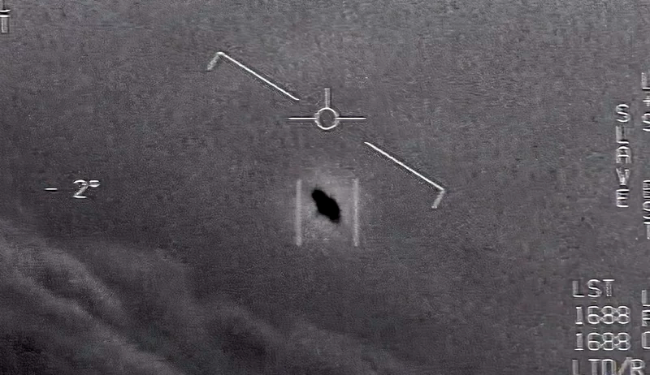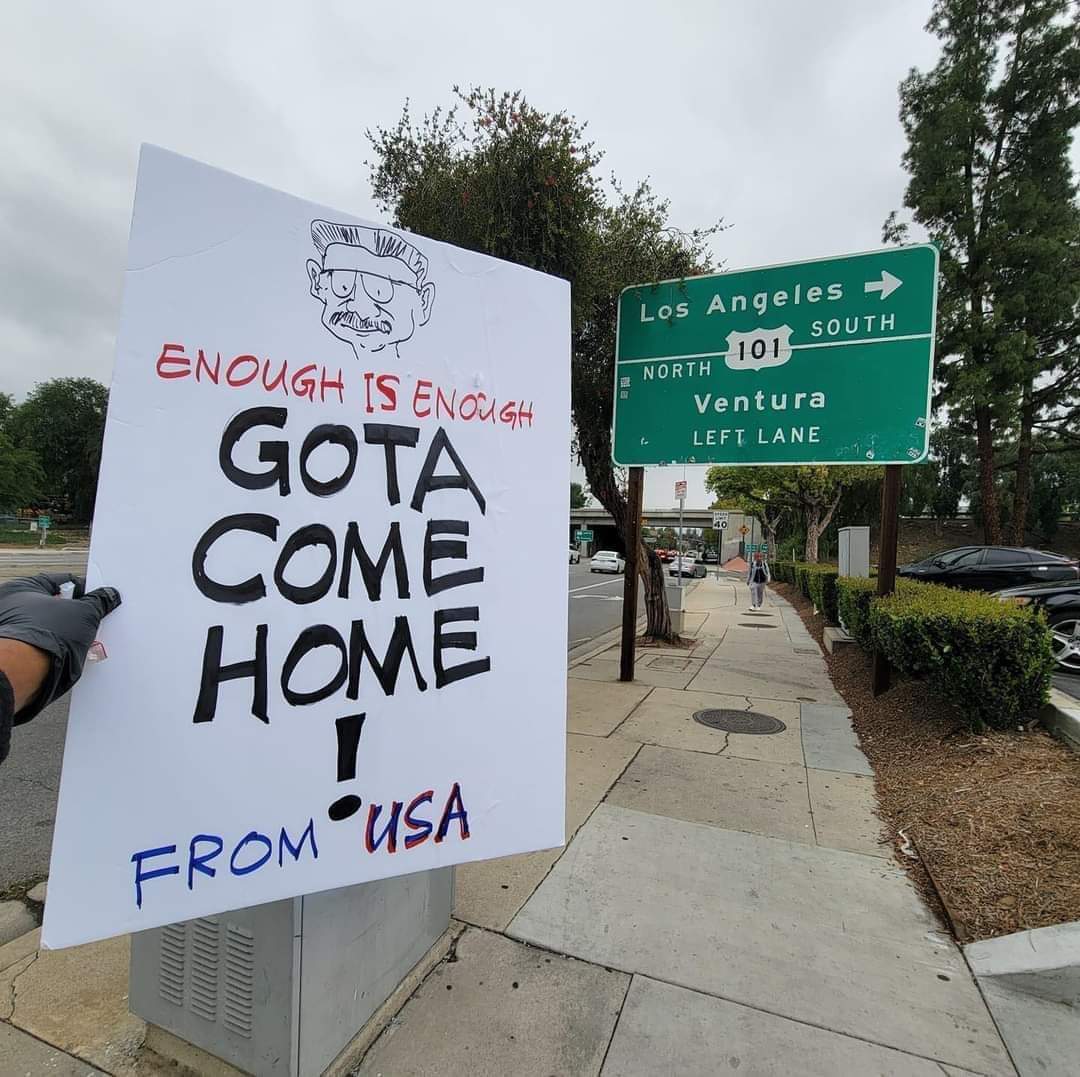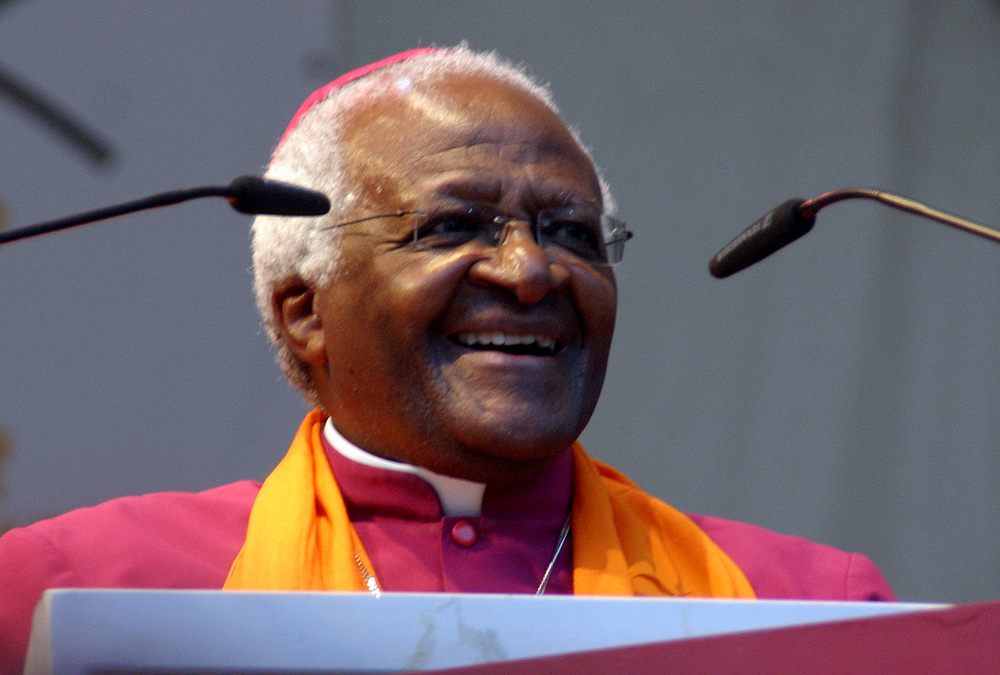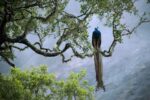A RENEWED INTEREST IN UFOS: Are they interstellar craft?

It now seems that America is finally ready to take UFOs (Unidentified Flying Objects) seriously. About two years ago, Barack Obama, a former US President, admitted the existence of these strange vehicles seen in our skies throughout the ages, but said that we didn’t know exactly what they were. On 26th July of this year, the US Congress held a public hearing on claims that the government is covering up its knowledge of UFOs. This historic hearing, unsurprisingly, stirred huge interest in the US and around the world, as it heard evidence from three key witnesses, including David Grusch, a former intelligence official who had claimed in June that the US is in possession of “intact and partially intact” alien vehicles. He had also stated to the media that the US government has in its custody non-human bodies retrieved from crash sites, although the Pentagon denied these startling cover-up allegations. Such stories together with the plethora of books on extraterrestrial intervention in religions, folklore, art, etc. in the past history of humankind; the many cases of UFO contactees and abductees; the supposed medical experiments conducted by outer space denizens on us earthlings; the ‘fragments’ found from these celestial vehicles; the possibility of intelligent life in the cosmos that cannot be ruled out; and the celebration of the World UFO Day on 02nd July each year to acknowledge the presence of extraterrestrial life and spread awareness about unidentified flying objects; tend to confirm the most popular current belief of an extraterrestrial origin of these craft. But, most researchers in this field, based on very justifiable and logical reasons, are now rejecting the extraterrestrial theory and questioning whether interstellar visitations could be a valid option to explain the sightings.
The UFOs are no longer figments of the man’s imagination. They are real! Over different periods, millions of people around the globe have seen them, including unusually reliable observers of all kinds: scientists, world leaders, the military, clergy, and ordinary citizens who were not suffering from any ufomania.
The serious modern research on UFOs began around 1947 when Kenneth Albert Arnold (1915-1984), American aviator and businessman, while flying his private plane over Mount Rainier in Washington, suddenly noticed nine unusual disc-like objects flying in a chain at a speed of 1932 km per hour. This alleged sighting on 24th June in that year led the press to quickly coin the terms ‘flying saucer’ or ‘flying disc’ that became popular from then on.
Major Donald Edward Keyhoe (1897-1988), American naval aviator, UFO researcher and author of Flying Saucers from Outer Space (1953), was the first to use the term UFO. The first photographs of a UFO were taken in 1883 by Mexican astronomer, engineer and astrophotographer José Bonilla (1853-1920) in Zacatecas, Mexico.
Ultraterrestrial/interdimensional hypotheses
Although the extraterrestrial hypothesis had remained predominant, the ultra terrestrial or interdimensional hypothesis gradually began to be embraced by some UFO investigators in the 1960s. The late American ufologist and parapsychologist John Alva Keel (1930-2009), who was initially hopeful to somehow validate the popular theory of visitations from other galaxies and solar systems, concluded after one year of research, that this theory was no longer tenable and abandoned it in 1967 when his own field research disclosed an astonishing overlap between psychic phenomena and UFOs. He claimed that the objects and apparitions did not necessarily originate on another planet and might not even exist as permanent constructions of matter. “It is more likely that we see what we want to see and interpret such visions according to our contemporary beliefs’, ” he said. In his 1970 book UFOs: Operation Trojan Horse, Keel argued that a non-human or spiritual intelligence source had staged whole events over a long period of time in order to propagate and reinforce certain erroneous belief systems. In his 1975 book The Cosmic Question, he postulated that many UFO contactees had been exposed to a blinding light followed by a vision or by an aural or auditory hallucination. He said that often the experience was accompanied by an overwhelming sense of euphoria almost sexual in nature which was a kind of mental orgasm that religionists called an ‘ecstasy’. The recipients of this surreal experience later changed their entire way of life, quitting their jobs, abandoning their wives and families, and even changing their names, adopting instead space names. Keel used the term “ultraterrestrials’ ‘ to describe UFO occupants he believed to be non-human entities capable of taking on whatever form they wanted.
Dr. Josef Allen Hynek (1910-1986), the author of The UFO Experience-A Scientific Inquiry (1972), was astronomical consultant to the US Air Force’s Project Blue Book, the final official arbiters on all UFO reports. He is best remembered for his own independent and unprejudiced scientific analysis of UFO reports in his later years, developing the “Close Encounter” classification system. At first Hynek was sceptical of UFO sightings, suspecting that they were reported by unreliable witnesses or by persons who had misidentified man-made or natural objects. On being asked what caused his change of opinion, he responded that one reason was the completely negative and unyielding attitude of the Air Force which he resented and the other was the calibre of the witnesses: fairly well-trained military pilots who had seen these objects. In his book Hynek deplored the official philosophy which the air force investigators were imbued with: that UFOs were delusions, thus the researchers making only a perfunctory interrogation, asking why spending time on something that was meaningless in the first place?
At a 1973 annual symposium of a US-based non-profit organisation of civilian volunteers, claiming over 4000 members worldwide, who study reported UFO sightings, Hynek first expressed his doubts with regard to the interplanetary or intergalactic hypothesis. “…From remote regions of space? And to what purpose? To scare us by stopping cars, and disturbing animals, and puzzling us with their seemingly pointless antics?”, he questioned at the symposium, held in Akron, Ohio.
Interlocking universes
In a 1975 interview, Hynek surmised that there could be other universes with different quantum rules or vibration rates and our own space-time continuum could be a cross-section through a universe with many more dimensions. He talked about the hard time one would have convincing an aborigine that right now, through this room, TV pictures were passing and one had to have a transducer to see them, namely a TV set. “Well, in the same sense, there may be interlocking universes right here”, he pointed out.
Another proponent who shared this interdimensional theory, is French computer scientist, astronomer and maverick ufologist Jacques Fabrice Vallée, born in 1939. On a clear, windless Sunday in the spring, Vallée, aged 15, saw a grey disc, silently parked above the town’s Gothic cathedral. He began researching the commonalities between UFOs, cults, religious movements, demons, angels, fairies, ghosts and psychic phenomena and his speculation about these potential links was first detailed in his third UFO book Passport to Magonia: From Folklore to Flying Saucers. Whatever was behind the UFO phenomenon, Vallée said: “It’s a lot smarter than we are, and it uses humour at another level”. He jokingly said that he was the only ufologist who did not know what UFOs were and he doubted that they were interstellar sport vehicles. The truth, according to him, was almost surely freakier than that, more baffling, and more revealing of the nature of the universe.
Fairies are known for kidnapping people: the same irritating habit which aliens have. Abducted people report incidents of missing time: a phenomenon very similar to time lapses reported by people taken to and returned from fairyland. Like modern ufonauts, fairies too tend to be diminutive creatures with large magical eyes. Many reports of alien kidnapping cite power rods used to paralyse abductees, just as fairies wield magic wands.
A chimp does not comprehend the dimension of time like humans do and a chimp could never understand that time and space are actually two parts of the same dimension, as scientists have discovered. Mathematicians tell us that there might be many additional dimensions of reality-dimensions which only the most brilliant math minds can glimpse through numbers. If ultraterrestrials can exist above or beyond spacetime, they can easily see us, trick us and manipulate our existence while we cannot see them at all or perhaps only when they allow us to see them.
Vallée asserts that the UFO entities could be multi-dimensional beyond space-time; thus they could coexist with humans, yet remain undetected. His opposition to the popular extraterrestrial hypothesis was not well received by leading ufologists and he was regarded as an outcast. Vallée referred to himself as a “heretic among heretics”. Vallée even conjectured that Marian apparitions at Fatima in Portugal and Lourdes in France were a class of UFO encounters.
Vallée’s opposition to the popular outer space theory is summarised in his paper Five Arguments Against the Extraterrestrial Origin of Unidentified Flying Objects in the Journal of Scientific Exploration in 1990.
- Unexplained close encounters are far more numerous than required for any physical survey of the earth;
- The humanoid body structure of the alleged “aliens” is not likely to have originated on another planet and is not biologically adapted to space travel;
- The reported behaviour in thousands of abduction reports contradicts the hypothesis of genetic or scientific experimentation on humans by an advanced race;
- The extension of the phenomenon throughout recorded human history demonstrates that UFOs are not a contemporary phenomenon; and
- The apparent ability of UFOs to manipulate space and time suggests radically different and richer alternatives.
Paranormal hypotheses
Occultist and ufologist Meade Layne (1882-1961) is regarded as the earliest proponent of the interdimensional hypothesis while Swiss psychiatrist Carl Gustav Jung (1875-1961) was “puzzled to death” by flying saucers. In his book on the subject he likened UFOs to a “technological angel” or a “physicists’ miracle”. They seemed to have a similar effect on our psyche-a “symbol of wholeness” that appears in “situations of psychic confusion and perplexity”.
Sheila Ostrander and Lynn Schroeder in their excellent and authoritative book Psychic Discoveries behind the Iron Curtain recorded that the UFO question was being studied in the then Soviet Union from this angle. Belgian author Julien Weverbergh demonstrated through statistics that the UFO phenomenon is primarily a luminous one: fleeting glimpses of light in the sky which is manipulated and/or corporeal light. He proposed to get used to thinking in terms of UFO=light rather than UFO=metal, saying that this particular luminous phenomenon and its effects are undoubtedly analogous or, rather, parallel to certain paranormal phenomena in the literature in this field. Keel said that sudden temperature changes were quite common in both ghost stories and UFO reports. A room, or the interior of a car, can become unbearably hot or unbearably cold in a matter of seconds in the presence of an apparition or a UFO although flying saucer believers attribute this to a mechanical effect of the UFO’s superior technology, he pointed out. Keel postulated that the UFOs were similar to psychic manifestations and were produced by complex distortions of space, time, and even of reality itself. English Science fiction writer Sir Arthur Charles Clarke (1917-2008) and futurist thought that the absence of sonic booms proved the paraphysical or non-material nature of the UFOs.
Weldon’s demonic theory
John Weldon received his B. A. degree with honours from the California State University of San Diego in 1972. He graduated with distinction in Sociology and became a research editor for the Christian Research Institute. In his thought-provoking book Encounters with UFOs with Zola Levitt, a Hebrew Christian and a marriage counsellor, with a degree in music from the Indiana University, Weldon believed that there was an important correlation between the upsurge of occult phenomena in human society and the increased prevalence of the UFOs. He claimed that the alleged incidents recounted in the popular press were strikingly similar to possession by biblical demons and psychic phenomena which had long been known to theologians and parapsychologists. “Demons …. do behave in the way UFOs behave …. They don’t need a material place to come from and are most certainly interested in the world’s theological future”, he wrote. The author cited dangerous physical effects resulting from close association with UFO beings or craft, that included blackouts, blindness, sexual assault, psychological disturbances, painful skin infections, chronic headaches, convulsive seizures and even cancer.
Weldon, like Keel, Hynek and Vallée, said that the very behaviour of these craft raised insurmountable problems for extraterrestrial theorists. He argued that radar had never recorded the actual entering of UFOs into our atmosphere. The author could not understand the special interest of these aliens in our earth, just one little planet among the solar systems. “The aliens seem able to live in our atmosphere without the help of any respiratory devices…. They are deliberately secretive ….” he wrote, adding that they seem to be habitual liars as well. “Despite over 3000 UFO chases, nothing has been gained. Is this why they came billions of miles? To play hide and seek?” he questioned. Weldon equally pointed out that the reported dream-like quality of many alien encounters suggested that the event was not real, but probably psychologically induced and these objects changing their shape, size, colour, etc. and their merging, splitting, etc. were also very problematic.
Suicides and nervous breakdowns among ufologists
According to Weldon, there is a high incidence of sudden or mysterious deaths, suicides and nervous breakdowns among UFO investigators. One prominent example is the tragic death of American ufologist Dr. Morris Ketchum Jessup (1900-1959). He earned a bachelor of science degree in astronomy from the University of Michigan in 1925 and the following year, received a master of science degree. Jessup’s later books on UFOs did not sell well and his publisher rejected several other manuscripts. In 1958 his wife left him and he met with a serious car accident that apparently increased his despondency and instability. In 1959, his car was found on a road in Florida with Jessup dead inside. Friends said that he had been extremely depressed and had discussed suicide with them for several months. The death was ruled a suicide.
Gaurav Tiwari (1985-2016) was an Indian paranormal investigator, UFO field researcher, TV presenter of programmes on the paranormal and Founder of the Indian Paranormal Society. Tiwari, aged 30, committed suicide by hanging himself inside his bathroom. Speculation was rife among his fans and enthusiasts that his untimely death was caused by vengeful spirits, but following an autopsy, Delhi Police determined that it was a clear case of suicide. It was found that Tiwari had no major projects for the future and the projects he already had brought in little money, that led to frequent disagreements with his family.
The Bible and flying saucers
Books have been published, attempting to interrelate the Bible and flying saucers. These books, which have become best-sellers, assert that all the biblical miracles were done by the intermediacy of UFOs and that biblical angels were really extraterrestrials. Two of the more popular books of this genre are The Bible and Flying Saucers (1968) by Dr. Barry Downing, an American Presbyterian minister, born in 1938) and God Drives a Flying Saucer (1969) by Robert Dione (1922-1996), an American school teacher. But, Weldon says that these ‘saucer theologians’ are invariably poor on scholarship, this including even the scholarly attempts by Josef Blumrich (1913-2002) in his Spaceships of Ezekiel (1974), originally published in German under the title Da tat sich der Himmel auf (1973). Blumrich, a prominent NASA engineer, claimed that prophet Ezekiel’s account in the Bible was not a description of a meeting with God, but one of several encounters with ancient astronauts in a shuttlecraft from another planet.
Weldon said that these books were inconsistent, violated accepted methods of interpretation, ignored contextual considerations, disregarded cultural and historical matters, deleted or amended the text to support their views. He quoted Dr. Robert Ellwood (born in 1933), a Professor of World Religions at the University of Southern California, who reviewed fifteen of these books and came to the conclusion that they were a “hopeless mass of woolly theories and garbled facts” by authors who were obviously ignorant of the language and cultures of ancient books. “Needless to say, saucer theologians do their readers a great disservice in implying the Bible is related to UFOs. The evidence clearly says otherwise”, Weldon said.
Dr. Edward Uhler Condon (1902-1974), American nuclear physicist and a pioneer in quantum mechanics, who led a US committee to study the extraterrestrial hypothesis, said that the existence of UFOs could not be proved scientifically, and categorically stated that all such literature should be banned and those who claimed to have seen them should be ostracised, thus earning criticism from Hynek.
Even in the face of such ‘harsh’ remarks, people continue to see these elusive strange craft. Therefore, many scientists now believe that these ‘spaceships’ or whatever they are, are real; yet these scholars are in the dark as to what these objects are or what their underlying motive is. ***







